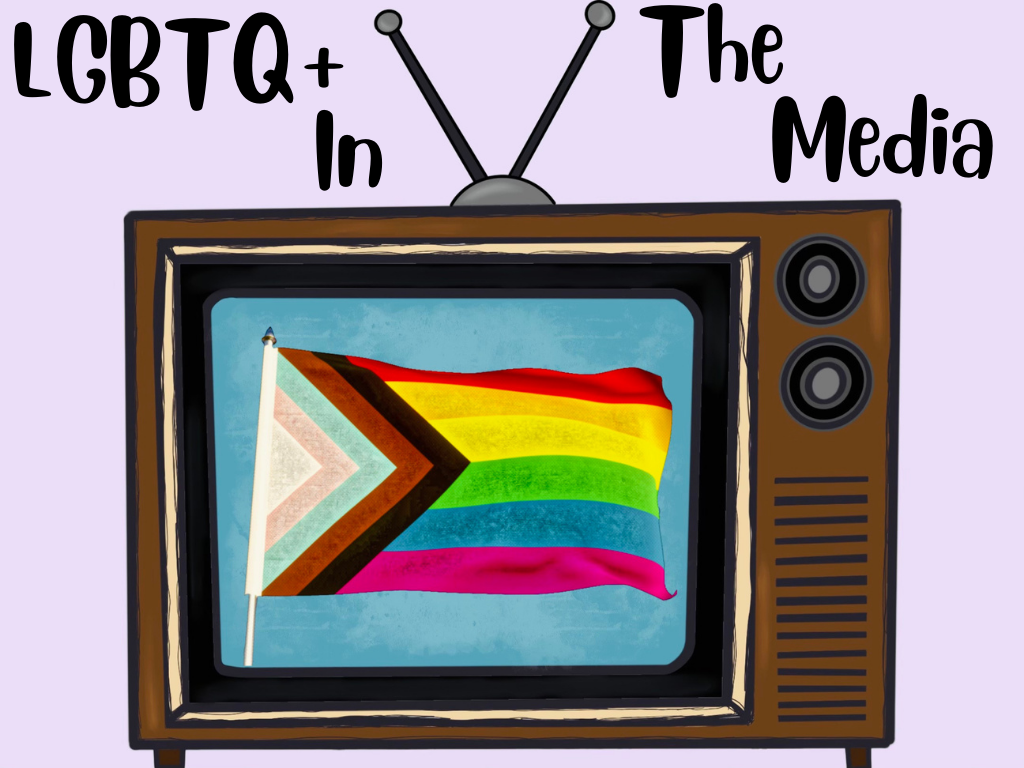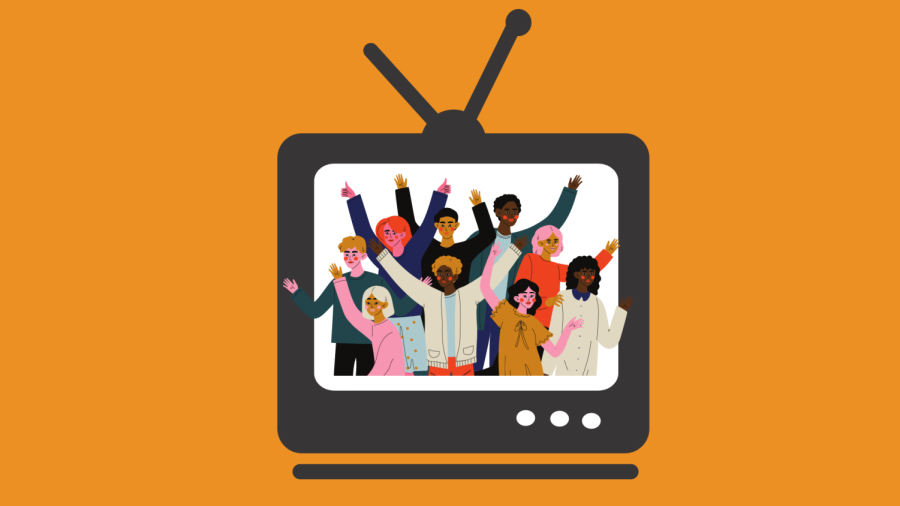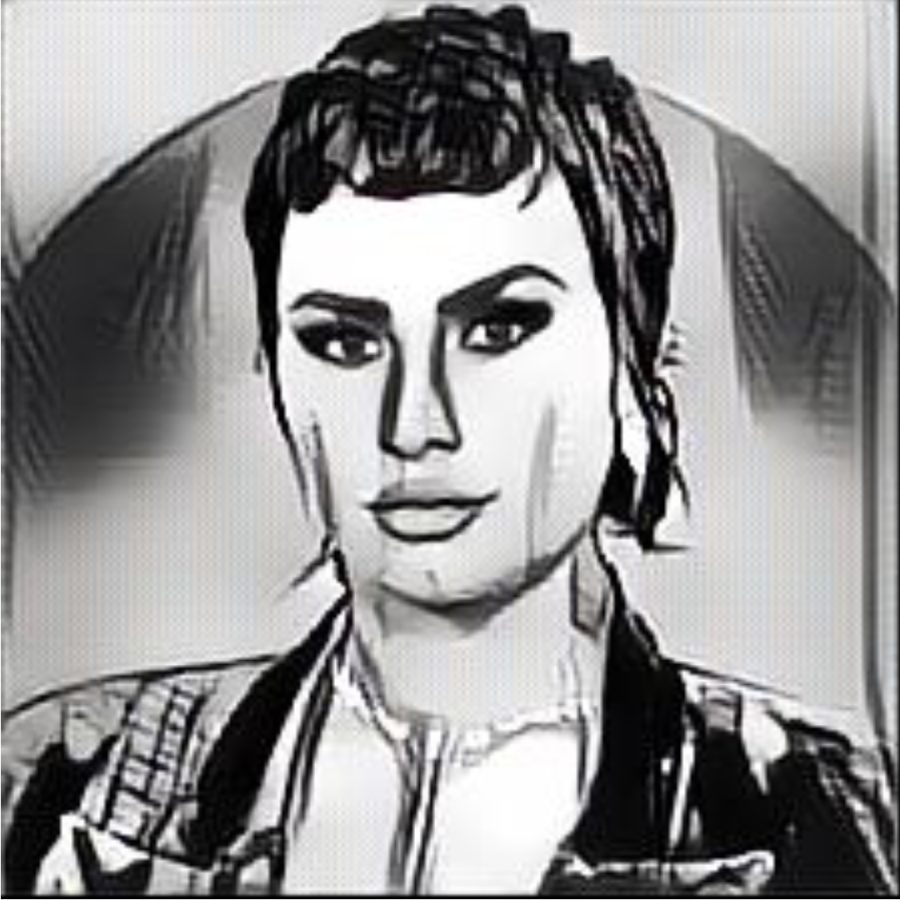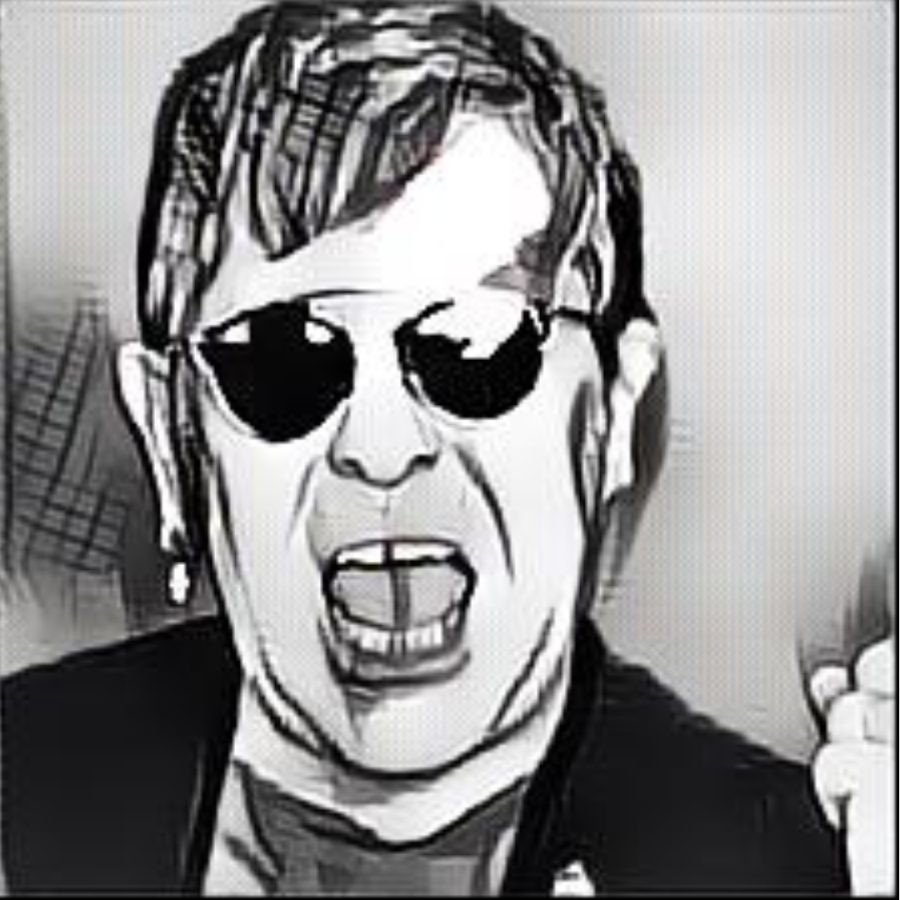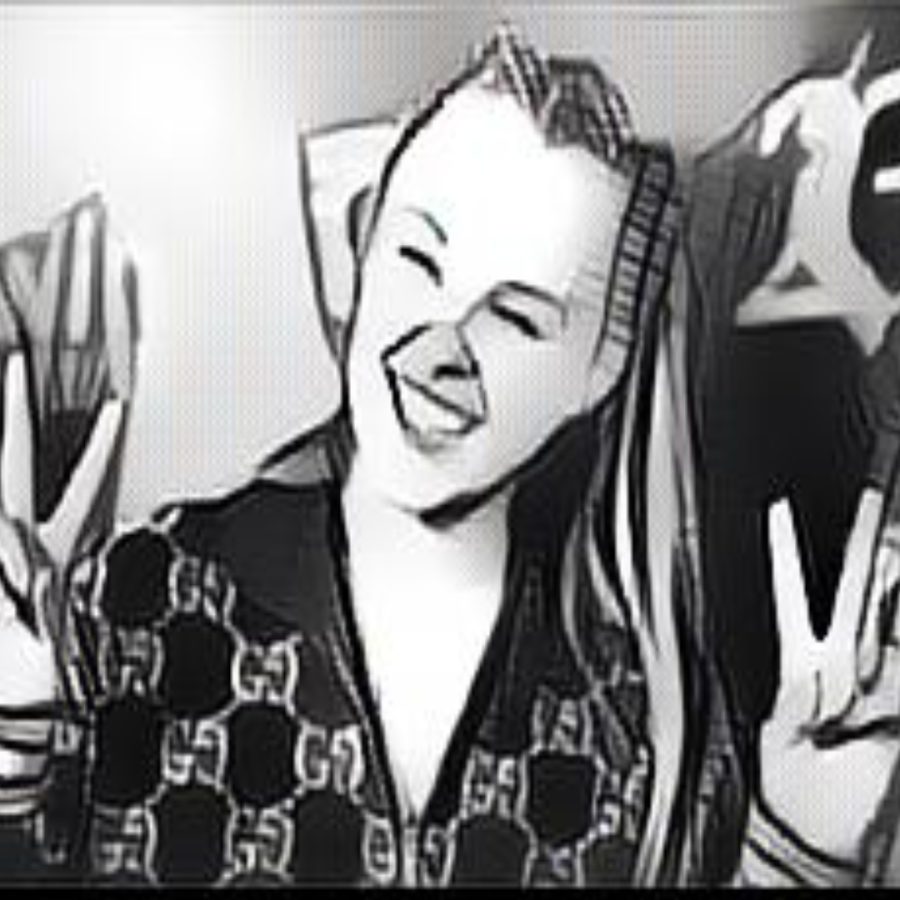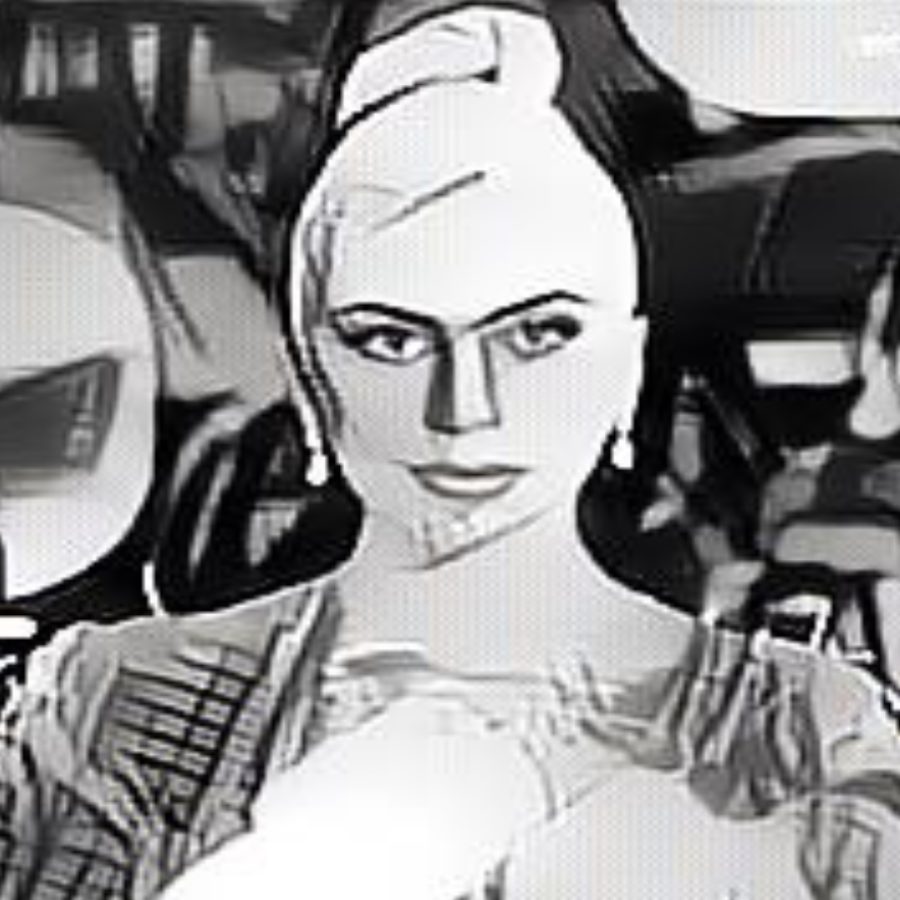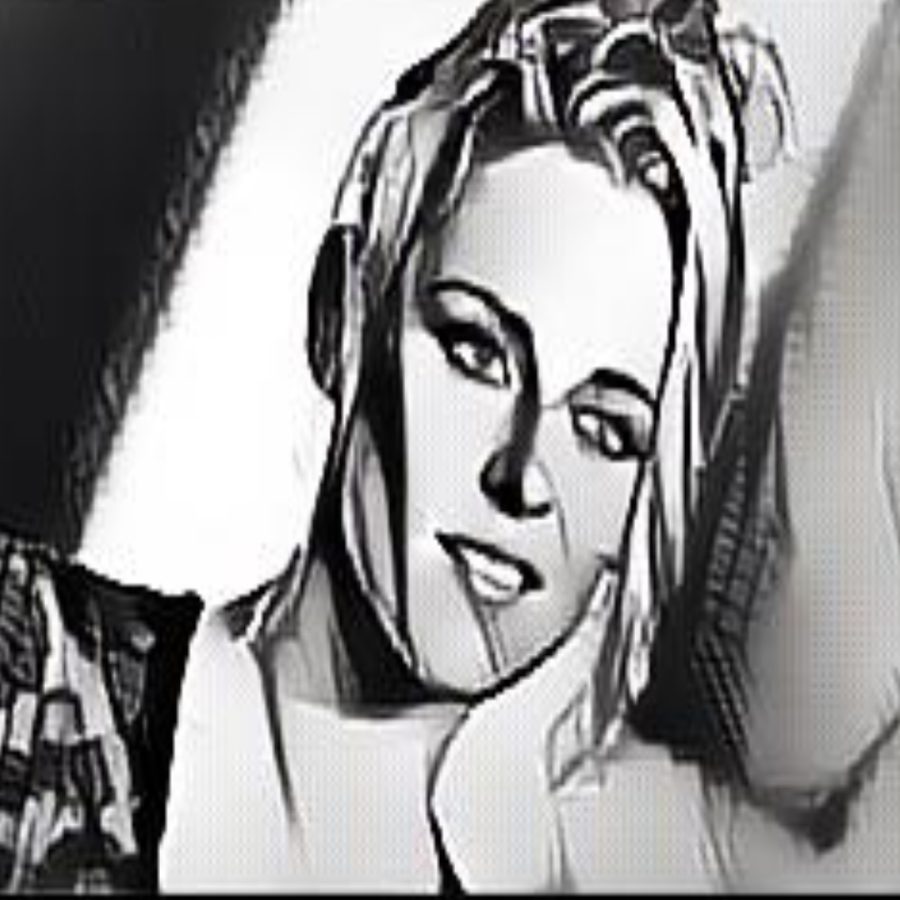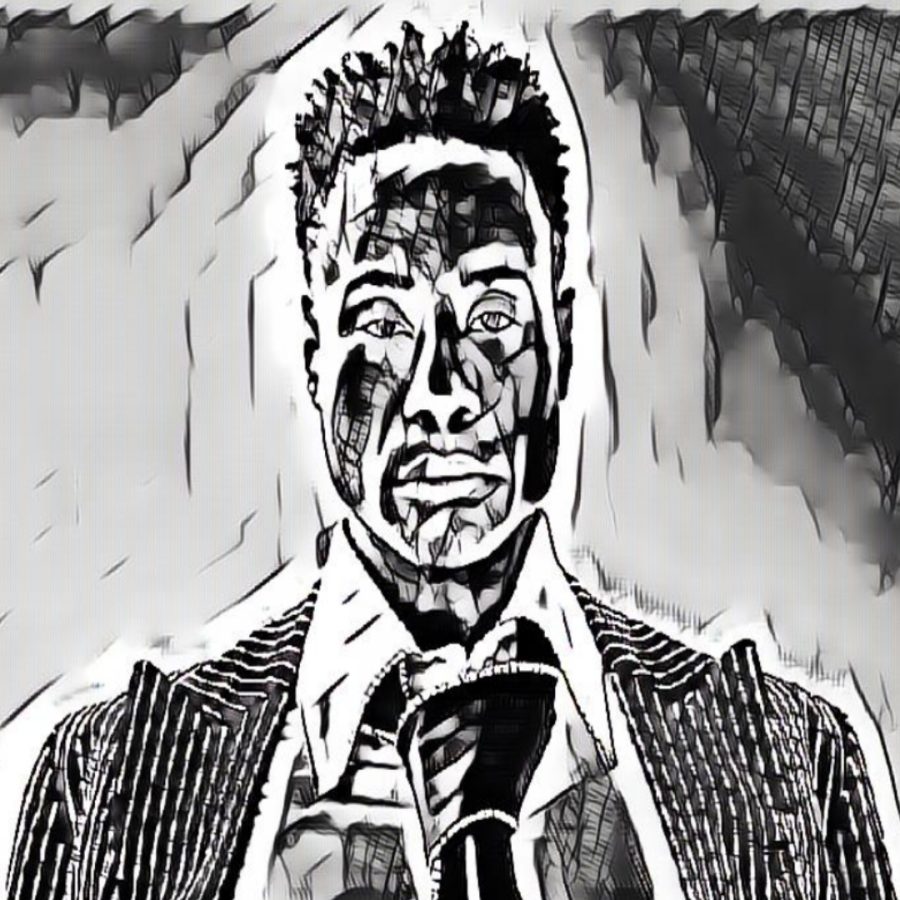LGBTQ+ In The Media
May 31, 2022
In recent years, people are slowly becoming more accepting of the LGBTQ+ community, or at least that’s what it seems like in our everyday lives. But when we look closely is when we begin to see what is really happening. Still, there is discrimination based on gender identify and sexual orientation, and the media is no exception. Television, books and music are no exception to the discriminatory based atmosphere. Actors like Kristen Stewart and singers like Lil Nas X have tried to break down barriers, but there is still a long way to go as far as the media is concerned. This package will explore all different forms of media and how the LGBTQ+ community impacts different areas.
Liberty And Justice For All: Representation in media matter, and we need more of it
This package is all about representation in the media. So, why does that topic matter? To find out, we’re calling back to the 4th edition of Eastside’s “Liberty and Justice for All,” in which columnist Aiden Rood shared their perspective on the importance of diverse representation in all different forms of media.
When you sit down to watch the latest hit movie or your next great Netflix binge, do you see someone on the screen who looks like you? For most straight, white, cisgender Americans, the answer is most often “yes.” But for the LGBTQ+ community, people of color, and other minority groups in the United States, the answer is all too often “no.”
Representation matters. And that scenario lays out why it’s so important.
Over the years, the representation of minority groups in entertainment and media has risen. However, the creation of equitable representation still has a ways to go, and it’s important for us all to understand why this job must be finished.
When people feel “seen” in media, there are various benefits. According to Psychology Today, seeing oneself represented in media can “foster a great sense of affirmation” and “boost positive feelings of self-worth.” In a world where minority group members frequently face discrimination and other challenges, these mental benefits are critical. Plus, there can simply be increased enjoyment in entertainment for people from all backgrounds when they are represented.
To top it all off, increasing representation is beneficial not only for consumers, but also for those who produce media; an analysis by the McKinsey consulting firm found in 2021 that by breaking down barriers to equity in content creation, creators could “unlock” an additional $10,000,000,000 in currently untapped revenue.
Despite this myriad of benefits, resistance to representation has persisted in society and industry. In 2016, some of the only criticism levied against the otherwise universally acclaimed musical Hamilton centered around its casting of people of color for all of its roles. This illegitimate criticism took away from the diversity and brilliance of Lin Manuel Miranda’s creation. In 2020, for the first time in five years, LGBTQ+ characters’ representation in television programs went down, rather than continuing its positive trajectory. And in 2021, new data from the imagery company Getty demonstrated that even when LGBTQ+ people are represented in visual media, large percentages of such representation are comprised of stereotypes, failing to accurately display the community. These are just a few examples of the equal myriad of challenges that those seeking better representation in media and entertainment have been facing for years.
Solving the aforementioned problems, and furthering the development of the aforementioned benefits, will be critical in the creation of an equitable society. And we can help make it happen. When you do encounter a show or book that provides genuine representation for a minority group, support it! Sign petitions and make statements in support of more diverse casting and writing in entertainment. And when you hear someone question why representation matters, help them learn just how important it can be.
Everyone deserves to feel welcomed and seen in our society. Until that is our reality, and until everyone reading this can answer “yes” to that opening question, we will not have liberty and justice for all.
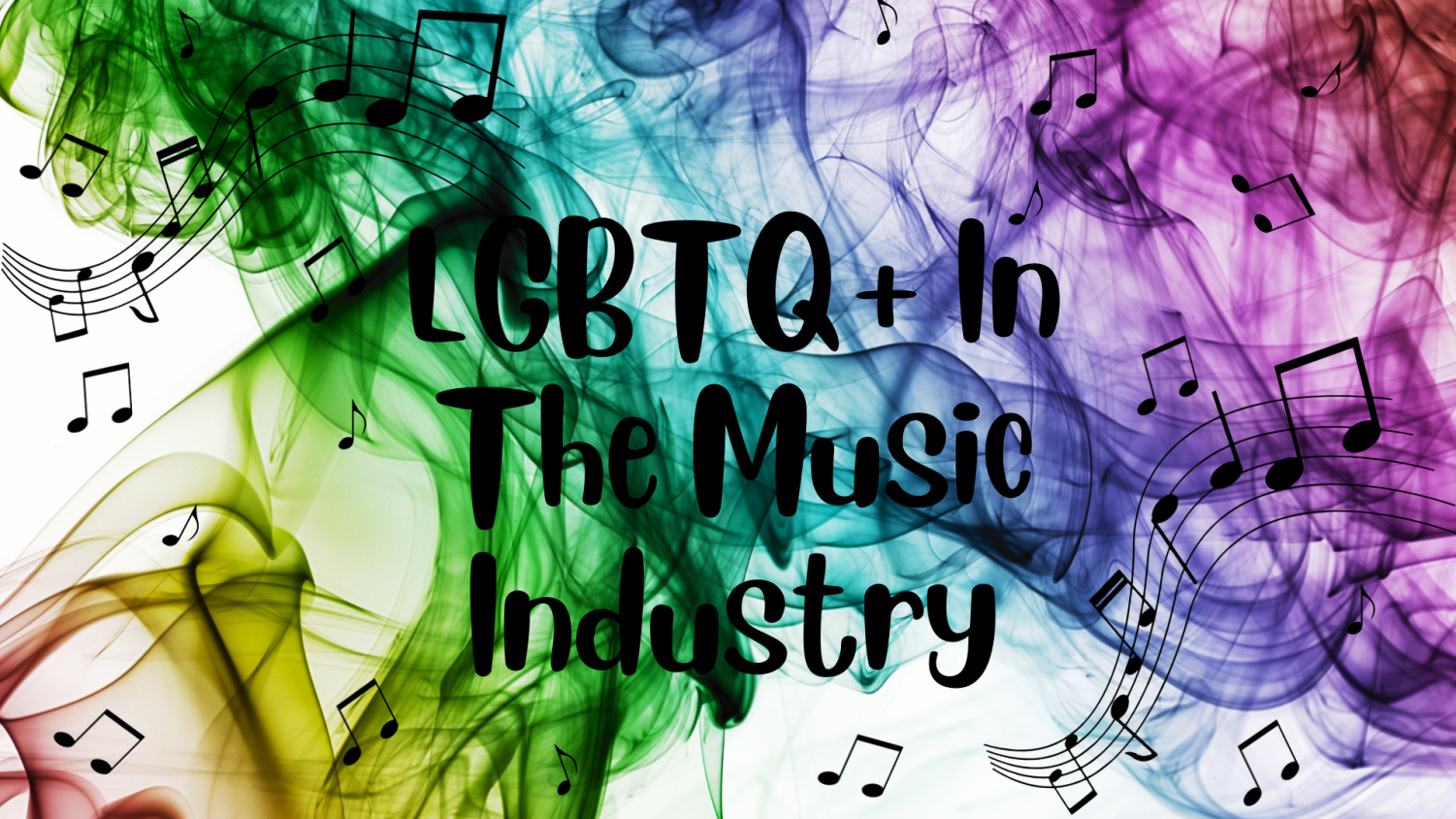
The music industry, especially country music, continues to be plagued by discrimination
LGBTQ+ Representation In The Music Industry
For years, discussion around the LGBTQ+ community has been limited in the media because many believe the subject to be too taboo. Throughout the later 1900s and into the twenty-first century, musicians began to break through this stigma through their songs. Songs such as “Born This Way,” by Lady Gaga and “I’m Coming Out,” by Diana Ross became iconic and served as anthems for the LGBTQ+ community.
While some may look over the impact of lyrics and melodies, music has the power to change someone’s day, let alone life. Listening to a sad song can give you an outlet to cry. Belting out a love ballad can bring a smile to your face. In a world where many people who identify as LGBTQ+ feel as though they are not represented and have no outlet, music can be a powerful thing for expressing emotions.
Similar to in movies and books, representation has grown within the music industry. However, it still does not adequately represent a large portion of the world. New artist Brandon Colbein, in an interview with Billboard, said that while there is more representation, you are only “counting eight on a table of tens of thousands of people. And then you get even deeper into it and look for queer people of color, and it’s basically non–existent.” Although there are big names such as Lil Nas X who are representing the LGBTQ+ community through their songs, there are still so many other artists who struggle to get to the top. This does not take into account that behind the scenes members, such as producers, writers, and executives also are not a very diverse group.
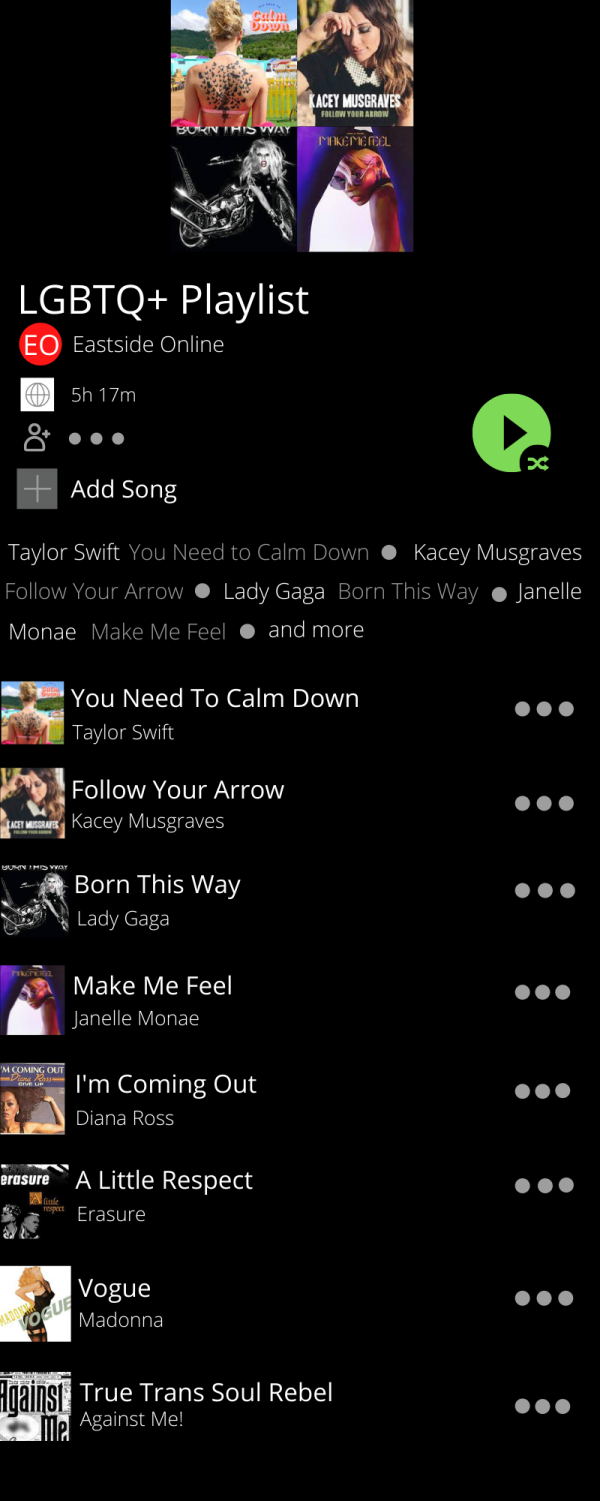
No genre is lacking in representation more than country music, both in regards to the LGBTQ+ community and racial diversity. The country music industry has been dominated by white men for decades, with some white women gaining popularity. It is scarce to see an African American country music artist. One of the most popular Black country music artists is Darius Rucker, who found success due to his previous stint as a member of the rock band Hootie and the Blowfish. This overall lack of diversity has left listeners who enjoy country music frustrated that they are unable to artists who represent themselves.When artists do come out and show their support or allyship, they sometimes face consequences. Even after winning four Grammy awards in 2019, country music star Kacey Musgraves fails to get adequate radio time. Some attribute this to her being a woman while others believe it is due to the pro-LGBTQ+ messages of her songs. Musgraves has worked with queer musicians throughout her career and has produced two popular songs, “Rainbow” and “Follow Your Arrow”, which seem to resonate with the LGBTQ+ community. Through lyrics such as “kiss lots of boys/ or kiss lots of girls if that something your into,” “follow your arrow wherever it points” and “there’s always been a rainbow hangin’ over your head”, Musgraves has developed a reputation for supporting the community, which the country music industry as a whole does not support. Even after facing backlash and being blacklisted by most country radio stations due to her “controversial” personal beliefs, Musgraves continues to show her support. In an interview with The Guardian following controversy after the production of “Follow Your Arrow,” in 2013, Musgraves said “I just hate that people are scared of it, but I don’t want to be begging. I don’t want to be at the mercy of country radio with it.”
Over the years, many country music stars have begun to advocate for the LGBTQ+ community including Luke Bryan, Brothers Osborne and Marren Moriss. While Musgraves was met with lots of backlash for her support, singer Luke Bryan found success after producing his song “Most People Are Good” in 2017. The song included the lyrics “I believe you love who you love/Ain’t nothing you should ever be ashamed of,” and the music video features same-sex couples. Even though the song differed from Bryan’s previous hits, it still dominated the charts. So, from 2013 to 2017 the country music industry may have become slightly more accepting.
While the music industry, especially the country music industry, still has work to do, the past years have displayed enormous increases in support. Now, we just need the representation to back it up. In order for this to occur, listeners need to branch out from the artists they typically listen to and try to support more LGBTQ+ artists. For songs to listen to, click here to see Eastside’s LGBTQ+ playlist.
Demi Lovato
Rising to fame in the early 2000’s, superstar Demi Lovato launched a career that has made leaps and bounds not only in music and television, but in the LGBTQ+ community. With Disney’s hit movie Camp Rock, Lovato was launched into stardom, and their single “This Is Me” from the movie now has over 62 million views on YouTube. Following their success in the first two Camp Rock movies, Lovato continued to work in television, but eventually decided to pursue music more seriously.
Hits like “Confident” and “Sorry Not Sorry” have been played repeatedly on the radio, but another that has not gone unnoticed by fans is their hit “Cool for the Summer.” In the song, Lovato sings about their experience exploring bisexuality and how it’s okay to be who you are. There is some controversy surrounding the song as the title implies that it’s nothing serious and mere curiosity is all bisexuality is, but more people were happy that someone of Lovato’s status was commenting on societal issues in the LGBTQ+ community.
Lovato has dealt with addiction ever since their Camp Rock days and in addition to that, Lovato has also had to deal with eating disorders and has struggled with self-harm. Lovato also spoke about being diagnosed with bipolar disorder, but according to the documentary “Dancing with the Devil” released on March 23, 2021, they revealed that it was a misdiagnosis. Regardless, with all of these things happening in their personal life, it is unfortunate to think that after Lovato tried to speak out about something that not only affects them but others in the LGBTQ+ community, there are still trolls attacking their feed even today.
Not only has Lovato come out as bisexual in recent years, but on May 19, 2021, they also shared on their podcast, “4D with Demi Lovato,” that they identified as non-binary. This means that Lovato does not identify as male nor female – in other words, they are gender non-conforming. They shared that after their overdose in 2018, they had to do a lot of self- reflection and they felt that a lot of the reason they went down a negative path was because they weren’t being truthful with themselves or the world. Since then, Lovato has come to terms with who they are and their sexuality.
Of course, there are still people who spread hate, but as Lovato has proven, just because somebody is part of the LGBTQ+ community or doesn’t fit society’s manufactured “norms,” it is still possible to have a successful career and bright future. Just recently, Lovato was up for a Grammy nomination for their song “Met Him Last Night” featuring Ariana Grande. Lovato’s fan base, the “Lovatics” are excited to see what’s in the future and there is no doubt that Lovato has increased awareness for the LGBTQ+ community.
Elton John
English singer-songwriter, Elton John, was born in 1947 to parents unaware that their son was to become a household name only fifteen years later. John showed his talent for music at an early age as he taught himself to play piano at age four. It was clear that his skill for music came to him in his sleep, but this ease in his life was not long-lived.
Elton John grew up as Reginald Kenneth Dwight in Middlesex, England. He was his parent’s only child and he shared in later interviews that they placed immense amounts of pressure on him to make a name for the family. His father served in the Royal Air Force leaving John to essentially grow up without him as he never seemed to be home. John’s parents wished for him to receive a high education, obtain a conventional job, and marry a woman all by the time he was thirty. Despite their wishes, Elton did the exact opposite.
At fifteen, John got a part-time job as a pianist at a pub near his childhood home and went by the name “Reggie.” He had this gig until 1962 when he formed a band called “Bluesology” which they played in until the late 60s. In 1971, John was scouted by Liberty Records for a record deal as a singer, songwriter and composer. When he accepted the offer he also legally changed his name to Elton John after two of his band members.
Around this time, John was engaged to his girlfriend, Linda Woodrow, but broke off the engagement only weeks before the wedding as he said that “something about the relationship felt wrong”. After this breakup, John released the track “Someone Saved My Life” in 1975. Many speculated that this was a farewell wish to Woodrow, but John later confessed that the song was hinting to his former bandmate, Long John Baldry, as John believed he was saved from years of an unhappy marriage. However, in later interviews, both John and Woodrow disclosed that their marriage ended as John had an affair of five years with his former manager, John Reid. Though this relationship did not progress, it helped John realize what he had been subconsciously hiding all of these years–his sexuality. In a 1976 print of The Rolling Stones, Elton John announced that he identified as bisexual.
John faced several years of hateful threats and the number of his listeners was practically cut in half. It was not until he married Renate Blauel in 1984 that he was left alone by the public. The two were married for four years and then slowly began to retreat from the public eye and divorced in early 1889. After their divorce, John quoted to The Rolling Stones that he was “quite comfortable being gay”.
In 1992, the Elton John AIDS Foundation was founded to further educate the public about the disease, as well as to fund research.
In the same year, John met his current husband, filmmaker David Furnish. The two were one of the first couples that were able to have a civil relationship under the law as they married each other on the day that the Civil Partnership Act came into play in late 2005.
Elton John continued to have a successful career, despite the hardships he was forced to face as he progressed into his late 50s. He has gone on many tours, raised a family, and has had his life made into a movie. In a 2016 interview with Independent magazine, John stated, “I have never been happier. I’m 69 in March and I feel very young inside. The body lets you down sometimes. But I think what keeps you young is the willingness to keep learning, the willingness to listen.”
Freddie Mercury
“Mama, I just killed a man,” sang Freddie Mercury in his hit single Bohemian Rhapsody, “put a gun against his head, pulled my trigger, now he’s dead.”
People have speculated about Mercury’s sexuality for years, but these lyrics might provide a clearer picture. While some may simply gloss over the meaning of these lyrics, the metaphor is rather apparent when closely analyzed. In Bohemian Rhapsody, Mercury effectively kills his past heterosexual identity and embraces his true sexual identity.
Because Mercury remained private in many aspects of his life, especially his sexuality, it is still debated whether Mercury was bisexual or gay. Even though Mercury was never open about his sexuality to the public, he did not let this hold him back while performing. Mercury was known for his loud personality and challenge social norms through his clothes, performances and songs.
From the age of 24 to his death, Mercury told of his love for his best friend and common-law wife, Mary Austen. Later in his life, Mercury developed a relationship with his long-term partner, Jim Hutton, who was by Mercury’s side till his death. Mercury, at 45 years old, died from complications due to AIDS.
The speculation and fascination surrounding Mercury’s sexuality influenced the production of Bohemian Rhapsody, starring Romi Malek as Freddie Mercury, in 2018. The film seeks to provide more insight into the rock ‘n’ roll icon while simultaneously exploring Mercury’s struggle with his sexuality. Some critics have said that the film included aspects of queer erasure and failed fully show the reality of the situation. However, others believe that by portraying how some, including Mary Austen and members of his label, denied how he identified, the reality of a man struggling with his sexuality in the late 1900’s is accurately portrayed.
What Mercury’s story does exemplify is the constant pressure on those who grapple with their sexual identity, whether it be external pressure or from the person themself. Sexuality is a spectrum and while many would like to fit people, such as Mercury, into distinct labels, this is not always possible. No matter his sexuality, Mercury was an icon who brought joy into the lives of his fans and has continued to impact people’s lives even today. So instead of dissecting his sexuality, it may be more important to look at the singer as a whole and think about how his story reflects the struggles of the LGBTQ+ community.
Jojo Siwa
A kids’ favorite, dance and music star and pop culture phenomenon, Jojo Siwa is many things. Arguably her most impactful role is served as an LGBTQ+ icon, especially for young people growing up as part of Gen Z.
In January 2021, after having alluded to her sexual identity previously, Siwa explicitly came out as a member of the LGBTQ+ community. On her Twitter account, Siwa posted a picture of herself wearing a shirt that said “BEST. GAY. COUSIN. EVER” in bold lettering. Since then, she has further shared that she identifies as pansexual.
Before this, Siwa was already a youth icon and rising star. Siwa has racked up nearly four billion views on her YouTube channel, released multiple EPs as a singer, and been a contestant or actor on various dance TV shows. In 2020, Time Magazine named her one of the 100 most influential people in the world at the age of just 17.
Siwa has made waves throughout society with her bold pride. As a TV star and beloved kid-favorite, she is highly visible among young people. For many, her presence can serve as an inspiration and a representation of the fact that for kids and adults alike, being LGBTQ+ is okay. As Siwa reaches her dreams and exhibits her pride at the same time, young people across the nation see that they could do the same, without having to hide who they are.
Nonetheless, Siwa has not always faced an easy path through her highly publicized life as a queer person. Recently, for example, she was barred from participation in the Nickelodeon Kids’ Choice Awards. After multiple previous years as a star headliner at the show, she was conspicuously not invited after coming out. Some people have sought to turn Siwa’s identity into a reason to block kids from engaging with media that includes her, perpetuating the idea that LGBTQ+ people are harmful and should not be “exposed” to children.
Despite the challenges she has faced, Siwa never wavered in her commitment to being a proud representative of LGBTQ+ people, especially for today’s youth. Siwa is living her truth with pride, and making an impact while doing it.
Lady Gaga
“You know what? It’s not a lie that I am bisexual and I like women, and anyone that wants to twist this into ‘she says she’s bisexual for marketing,’ this is a f—ing lie. This is who I am and who I have always been.”
This line, of course, was said by none other than Stefani Germanotta, AKA Lady Gaga.
Ever since she released “Born This Way” in 2011, Gaga has become one of the most powerful icons of the LGBTQ+ community. To this day, the song is an LGBT anthemñ Jojo Siwa, who became famous after starring in Dance Moms and profiting off of her very own sparkly-bow aesthetic, came out by lip-syncing “Born This Way” on TikTok. Everyone in the comment section immediately knew what she meant by publicly posting the video. Just in that instance, Lady Gaga’s impact speaks for itself.
Gaga has stated several times that, if nothing else, she wants people to remember her for her contributions to the fight for equality. Yet, she has stated that she isn’t the LGBTQ+ community’s spokesperson – they don’t need her, and they can speak for themselves. In a blend of these two ideas, she has expressed her desire to act as a figurehead that loves every human being, and that she has done.
She also frequently speaks of her identity as a bisexual woman, especially regarding her belief that she may not be “LGBT enough” for the standards of other members of the community. This belief resides within the hearts of many bisexual people, as they may feel shunned by both the straight and gay communities. However, Gaga takes this feeling and shoves it off, promoting her love for men, women and other people as something to be proud of.
In 2019, Lady Gaga spoke at the Stonewell Concert, saying she’d take a bullet for the LGBTQ+ community as an act of true love. Though she hasn’t made many speeches in recent years regarding the community, she shows her love for it anytime she performs “Born This Way.”
Taking a bullet may be one act of love, but when Gaga wrote that song, one of the greatest acts of love of all time occurred.
Girl In Red
“Do you listen to girl in red?”
This question may seem insignificant, like asking if one listens to, say, Taylor Swift or Drake. It could simply be an inquiry into musical preferences. However, when it comes to girl in red, there is a deeper meaning present.
For many people in the LGBTQ+ community, listening to girl in red’s music is a symbol of their queer identity. More specifically, “listening to girl in red” is a sort of code — one that represents being a member of the lesbian community.
Using girl in red as her stage name, artist Marie Ulven Ringheim has skyrocketed from a little-known indie artist to a global music sensation. With over 12,000,000 monthly listeners on the streaming platform Spotify, the 23-year-old Norwegian singer has fans across the world.
That success is a major advancement from her humble beginnings. At age 16, Ulven received a microphone as a gift from her father. At that point, she began recording music from inside her childhood bedroom. Focusing on mental health and LGBTQ+ romance as her main song topics, the young musician recorded her first two EPs in this low-budget fashion.
In 2021, girl in red released her first full studio album. She has continued to grow her career and succeed in going on a world tour and racking up nearly half a billion streams for her most popular song.
Ulven’s cultural impact, especially within the LGBTQ+ community, has already become hugely significant at her young age. For example, “falling in love in October” has been established as an LGBTQ+ trope, based on girl in red’s hit song “we fell in love in october.” As both an LGBTQ+ icon and a talented musician, girl in red is a critical representative of LGBTQ+ people in pop culture.
Which LGBTQ+ Artist Would You Like?
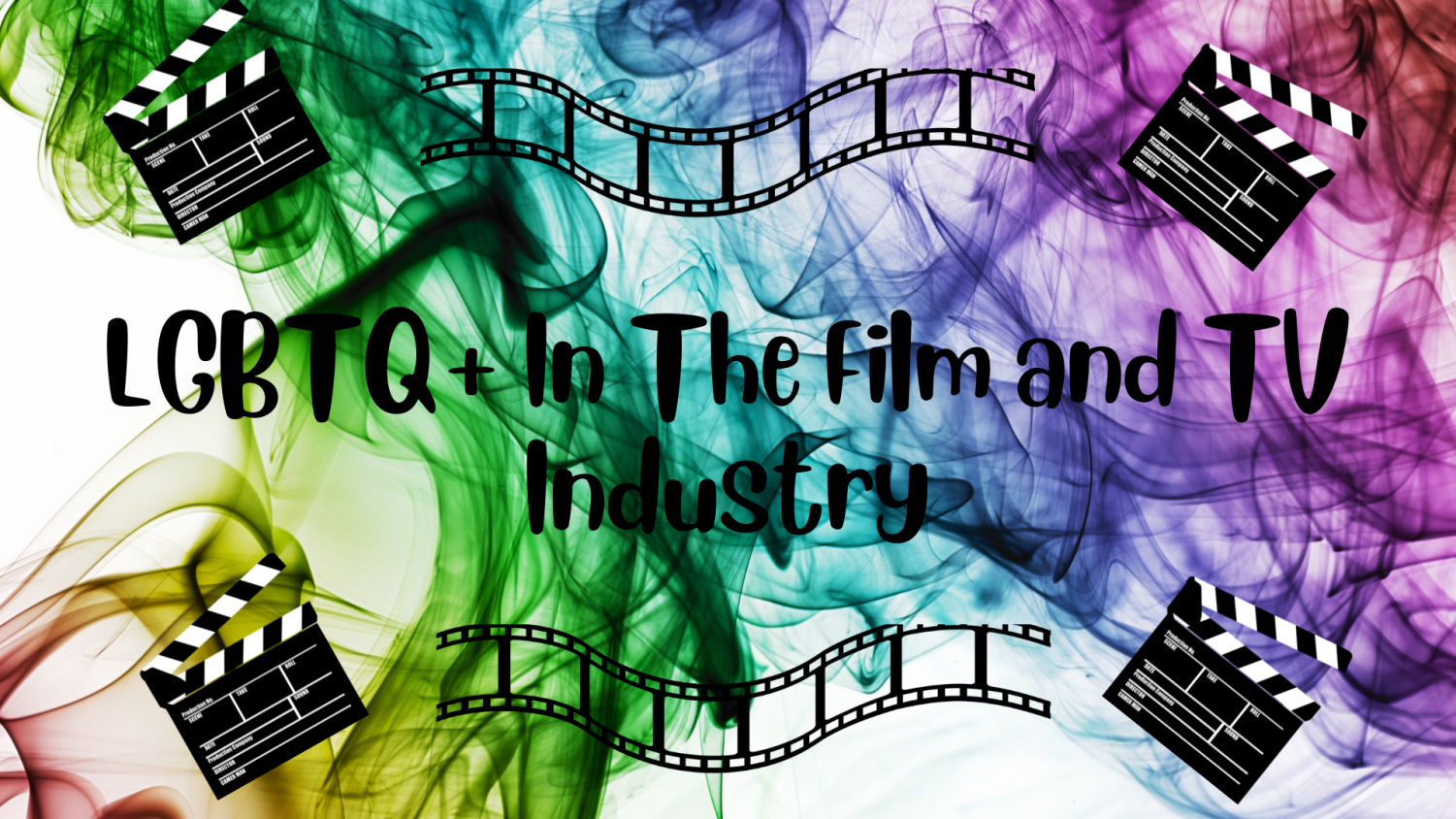
For years the LGBTQ+ community had been underrepresented in the film and television industry due to discrimination
LGBTQ+ Discrimination In Film and Television Industry
Television and film represent staple parts of American culture. Starting in childhood, media consumption serves as an important commonality to unify people with varying identities. This unification is one of great power, and has the ability to drastically influence the perspective by which a society operates. As the movement for LGBTQ liberation persists, institutions like Hollywood continue to fall short.
One 2014 report from UCLA’s Williams Institute illustrates this clearly. More than 50% of queer actors reported hearing homophobic comments from producers and directors; furthermore, of the 53% of respondents who were “out”, only 36% had disclosed this to their agents, and just 13% to industry executives. These statistics indicate a deep ill in the underbelly of American entertainment. While many of America’s most beloved actors and actresses identify as queer, they often are not welcomed by the very industry that their work supports.
Recently, controversy arose surrounding what is considered the largest entity in entertainment– Disney. In March of this year, Pixar employees released a letter condemning Disney’s anti-LGBTQ policies.
“Nearly every moment of overtly gay affection is cut at Disney’s behest,” they wrote. “Even if creating LGBTQIA+ content was the answer to fixing the discriminatory legislation in the world, we are being barred from creating it.”
The Human Rights Campaign also spoke out against Disney, rejecting their donation. This act was in protest of Disney’s adjacency to Florida’s controversial “Don’t Say Gay” bill. This highly contested legislation banned discussion of sexual orientation and gender identity for students until the third grade, and severely limited these discussions through the remaining school years. Critics argued that Disney ought to make a clear statement in opposition to this law, as they claim to be allies to the queer community and bring invaluable Florida tourism through their Disney World parks and resorts. A bitter taste was left in many people’s mouths, as donations of over 100 thousand dollars from Disney to the “Friends of Ron DeSantis” committee were highlighted.
“The Human Rights Campaign will not accept this money from Disney,” said interim president Joni Madison, “until we see them build on their public commitment and work with LGBTQ+ advocates to ensure that dangerous proposals, like Florida’s ‘Don’t Say Gay or Trans’ bill, don’t become dangerous laws”.
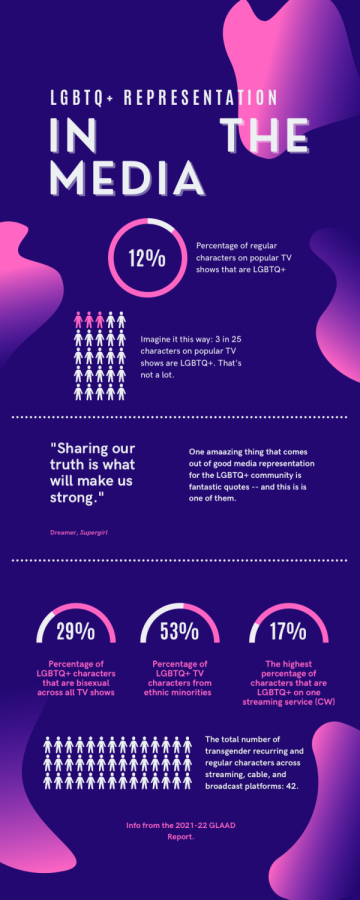
Other companies in addition to Disney continue to raise controversy. Jojo Siwa, a featured star in 11 children’s movies since 2016, recently came out as pansexual. Since coming out, Siwa has made herself an outspoken advocate for the LGBTQ community and hopes to be a role model for the younger generation.
Throughout her career, Siwa has maintained a strong public relationship with Nickelodeon, appearing in 6 of the company’s movies. Because of this, fans were confused when Siwa did not attend the 2022 Nickelodeon Kids Choice Awards, which she has always attended in the past.
“I’m not sure why,” she said in a statement on TikTok, “but I just didn’t get an invite”.
Many fans speculate this instance exemplifies the discrimination queer individuals face in the entertainment industry. With a near spotless public image and millions of supporters, audiences are left to wonder what other reason Nickelodeon could have for excluding Siwa, other than being gay.
Film companies like these have drastic control over queer representation in the media. Annually, the Gay & Lesbian Alliance Against Defamation (GLAAD), releases a Studio Responsibility Index on the prevalence of LGBTQ characters in film. They found, for the fourth year in a row, no transgender or nonbinary representation in 2020. While queer representation, in general, rose by 80%, GLAAD emphasizes the drastic decline of movie releases due to the pandemic, possibly distorting their results. Nonetheless, any win for LGBTQ representation is one that should be celebrated.
Currently, discrimination is still a tangible reality for queer members of the entertainment industry. Despite this, it’s impossible to ignore the drastic strides that have been made in recent years, with more representation and acceptance than ever before. In order to create true equality for these marginalized groups, it is crucial not to lose the momentum generated by modern progressive movements.
Kristen Stewart
Kristen Stewart: a true icon for so many young people. Starring in blockbuster movies like Twilight and Charlie’s Angels,” Stewart has not only been praised for her acting abilities, but her dedication to the LGBTQ+ community as well. In 2013 when she first started dating a woman by the name of Alicia Cargile, the rumor mills started. In 2017, Stewart sat down for an interview with Gaurdian and came out as bisexual.
Three years later, Stewart was out as queer and preparing for her upcoming movie, Happiest Season which was released on November 25, 2020. The movie follows a young woman who is not out to her family, but brings home her secret girlfriend for Christmas under the guise that she is “just a friend.” It seems as though Stewart may have wanted to do this movie to prove to the world that there is no problem with being gay, lesbian, queer, etc., but the LGBTQ+ community still faces very real problems today, like fear of families not accepting them for who they are.
Stewart has also said in multiple interviews that she felt a lot of pressure in her early years to label herself, but at 21 years old, she just wasn’t ready to put a name on who she was or what she was feeling. Nobody has to come out as straight, but as soon as you’re supposedly “different,” there seems to be a lot of pressure, especially on celebrities, to define exactly who they are, when they are still just normal human beings trying to figure it all out.
Today, Stewart is engaged to Dylan Meyer and her new movie Crimes of the Future, is scheduled to come out in June 2022. Stewart has become a role model for the LGBTQ+ community, and although being a role model is no easy task, Stewart has certainly done a spectacular job and she should continue to use her popularity to help others.
Hunter Schafer
Hunter Schafer is critically acclaimed for her phenomenal acting as Jules Vaughn in Euphoria and her beautiful modeling on runway walks for Rick Owens. For people in the Gen Z and Millennial generations, though, she’s more of an LGBTQ+ icon than anything else.
Schafer was born in Raleigh, North Carolina, on December 31, 1998. She began transitioning at 14, knowing her identity from a young age. Former Governor Pat McCrory passed House Bill 2, preventing Schafer and other trans women from using the girls’ bathroom and banning anti-discrimination legislation for all LGBTQ+ people. Governor McCrory had called the bathroom segment of the bill “common sense,” which Schafer knew it wasn’t. Soon, she decided to protest the law, filing a lawsuit with the American Civil Liberties Union and Lambda Legal at just the age of 17. That was just the beginning of her fight for trans and other LGBTQ+ rights.
She soon went on to talk about this law in an article she wrote for Teen Vogue, in which she said, “We deserve equal treatment — that is ‘common sense’ to me.” With her father, a pastor, supporting her, Schafer felt free to protest, and was all the more grateful for the support, since she knew that many LGBTQ+ teens didn’t (and don’t) receive the same support from their families.
After this public protest and her modeling career settled down, she started acting on Euphoria, which premiered in the summer of 2019. As Euphoria started picking up, both in pace on the show and in viewers, fans learned that Jules – Schafer – was transgender. Soon, it became a relatively significant plot point in the show because viewers learned that Jules was sent to a psychiatric facility in her youth by her mother, presumably because of her transness. This part doesn’t relate to Schafer’s trans experience. However, in her teenage life, Jules has all the support from her father for her identity, just like Schafer did in her youth.
Schafer later co-wrote and co-executive produced, with Sam Levinson, “Jules,” a special episode of Euphoria airing between seasons 1 and 2. This episode focuses on the trials and tribulations dealt with by sapphic teens, including questioning one’s sexuality and one’s status in the world as a woman attracted to other women. Fans, primarily women of the LGBTQ+ community, but also straight and cisgender women, were amazed by the writing in this episode, relating to Jules’ experience more than ever before. To find out that Schafer herself wrote it meant the world to fans around the globe, especially with her status as a trans and sapphic woman.
With Schafer, there is always more to come. She will soon star in season 3 of Euphoria, and perhaps she’ll do some more protesting before then. No matter what she decides to do, the world cannot and will not get enough of this LGBTQ+ star.
Billy Porter
Many celebrities use the red carpet to show off their personality and demonstrate high fashion. Gay actor Billy Porter uses his clothes not only to express himself but to advocate for gender nonconformity.
Porter emerged as an LGBTQ+ icon after obtaining the role of Lola in the Broadway production of Kinky Boots, which would eventually earn him an Emmy. Currently, Porter is one Oscar away from earning obtaining an EGOT. While winning an Emmy is a huge achievement for an actor or actress, Porter’s nomination was a landmark for the LGBTQ+ community because he was the first black gay man to ever win the Outstanding Lead Actor in a Drama Series category.
Years ago, Porter was known for wearing bold suits with fun prints and colors. In more recent years, Porter had begun to utilize fashion more by wearing skirts, dresses and other statement pieces in a fun way.
In an interview with Vogue, Porter said that his “ goal is to be a walking piece of political art every time [he shows] up. To challenge expectations. What is masculinity? What does it mean? Women show up every day in pants, but the minute a man wears a dress, the seas part.”
However, Porter has not let the critics stop him from expressing his beliefs on the red carpet. In 2019, Porter shows up to the Oscars wearing what would become an iconic ball gown with a suit-like top and a flowing skirt.
Off of the red carpet, Porter is not afraid to share his political opinions. He advocated not only for the LGBTQ+ community but against discrimination toward people of color. After the racial tensions mounted following George Floyde’s death, Porter become outspoken about advocating for the Black LGBTQ+ community and brought attention to the immense danger trans women face.
Currently, Porter is married to his husband Adam Smith and has been open with the public about his struggle with his HIV diagnosis.
LGBTQ+ Movie Recommendations
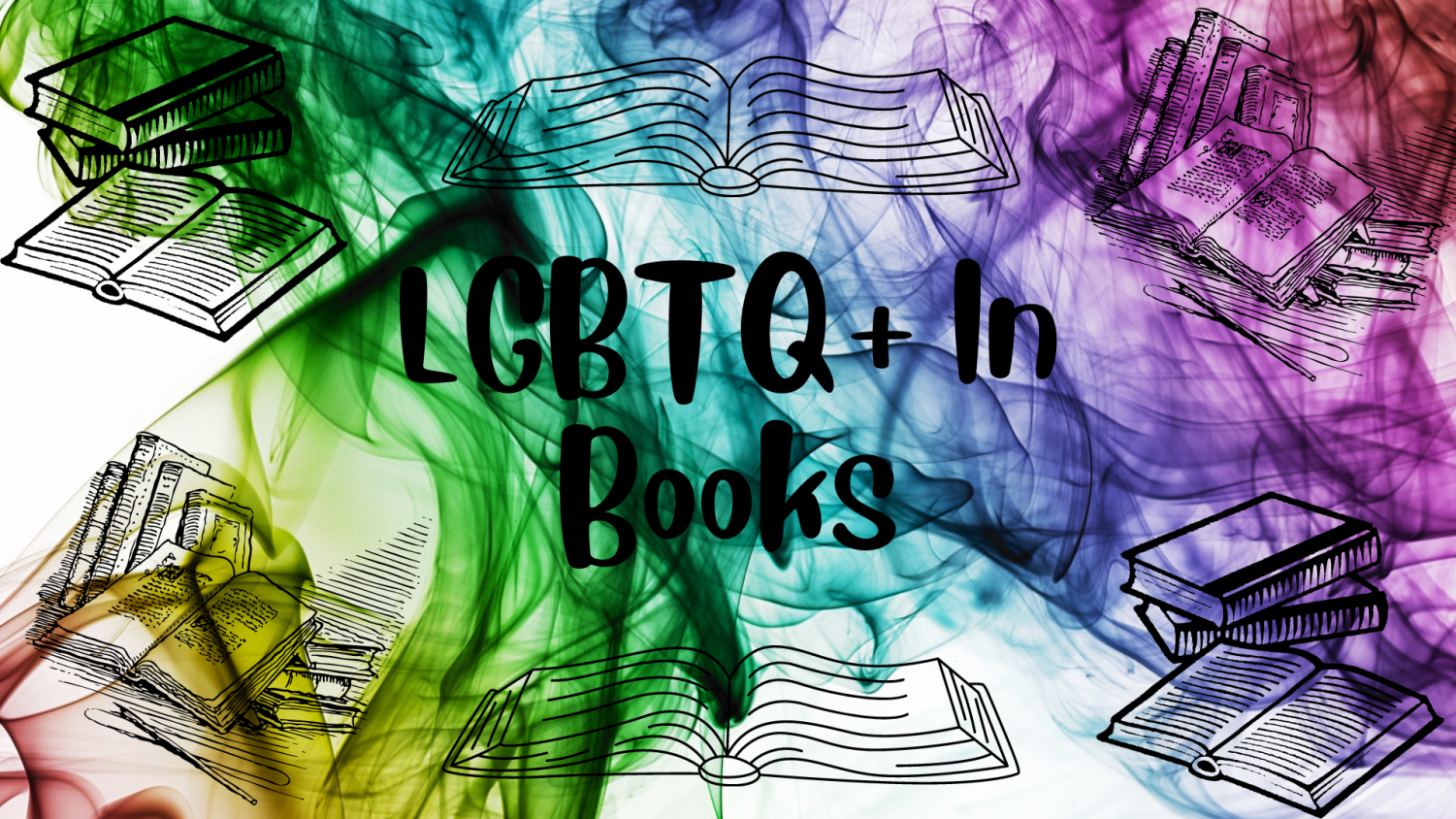
Romance novels need to include more LGBTQ+ representation so all readers can enjoy
LGBTQ+ Representation In Books
Bad boy falls in love with the good girl in high school. The college football star leaves behind his playboy ways for the girl of his dreams. A woman fleeing her past falls in love with the single dad next-door neighbor. If you are an avid romance reader, these tropes should sound familiar. But where is the diversity? And don’t get me wrong, I don’t mean diversity of tropes. I could read an enemies-to-lovers romance novel every day, and I often do, but where is the diversity in the relationships? Where is the representation?
A large majority of romance novels cover the classic boy and girl falling in love. But in real life, love is found by more than just people who identify as straight. However, the romance industry still fails to accurately represent the different types of relationships found in society every day. While there has been an increase in books portraying male/male and female/female relationships, other members of the LGBTQ+ community, such as those who identify as non-binary or pansexual, have a hard time finding books that include their sexuality.
For many romance readers, books are a place where they can see themselves as the main characters. They are not only reading the story of another, but become fully invested in the journey. This is hard to accomplish when the stories you connect with the most are few and far between. In a society where many people of the LGBTQ+ community don’t feel accepted and where suicide rates are high, it is imperative that LGBTQ+ youth and young adults have an outlet.

Even when romance novels do have and LGBTQ+ component, it is usually a side character, and therefore not a major plot-point. Very few novels explore the intricacies of navigating different types of love. Most of the romance novels with LGBTQ+ themes come from small indie companies or even self-published authors, not big companies with access to marketing.
However, in recent years the number of LGBTQ+ books being published has increased. After the publication of Simon vs The Homosapien Agenda, by Becky Albertalli, more public interest was put on LGBTQ+ books. Larger publishing companies such as Penguin Random House have become more active in publishing LGBTQ+ novels. According to the New York Times “about 850,000 LGBTQ romance books sold at traditional retail outlets in 2021– a 740 percent increase over a five-year period” in the United States. Nonetheless, this is still only roughly 4% of the total books sold in 2021.
The rise of BookTok has also given authors and readers the opportunity to push for more people to read LGBTQ+ books. During the summer of 2021, it was difficult to find a book recommendation video that did not include Red, White, and Royal Blue, by Casie McQuiston, who uses they/them pronouns. This novel follows the love story of Alex, the bisexual son of the President of the United States and the gay Prince of Whales.
The romance novel industry already faces harsh criticism for giving unrealistic standards, although it is fiction which means it is a made-up story and is full of fluff. However, many romance novels tackle challenges such as facing sexual assault, dealing with grief, suffering from mental illness, and one of the biggest challenges in life– falling in love. So why can’t the romance industry also tackle the prejudice around the LGBTQ+ community? Instead of listening to criticism from the broader society, the romance industry needs to listen to its readers. We want more sapphic novels. We want to see more males embracing their sexuality. Above all else, we want everybody to feel represented. We want everybody to be able to find an escape by doing the thing they love – reading.
